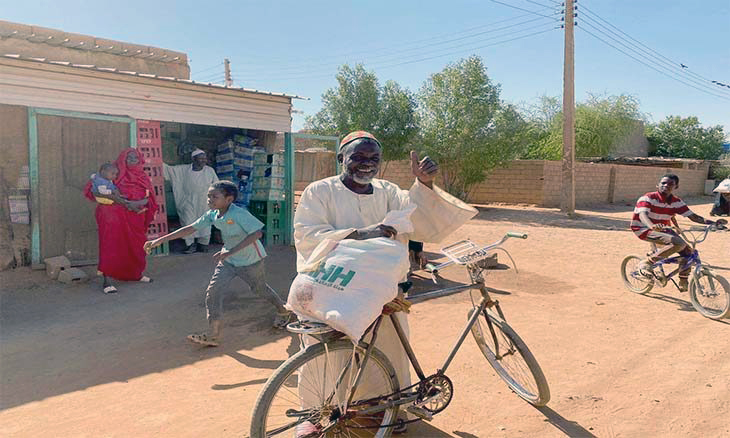
Sudanese Transportation Challenges: Bicycles as the Solution
By Ali Taher
Peoples paths are blocked, and everyone here in Khartoum is walking, whether on paved roads or dirt streets. There are no seats on the back of a bus to take you to your distant destination, except for a few lines that recently resumed their activity. Private and public cars, once a blessing, have turned into a curse. Both old and new models bring misfortune to their owners and their families, sometimes leading to murder. Amid the dangerous transportation crisis, bicycles have become an exclusive and popular mode of transport. Wheels have become the means of transportation for both long and short distances for the locals.
In the capital, Khartoum, which used to be bustling with various transportation options, activity came to a forced halt. Citizens have not ridden a private or public car for nine months, the duration of the war that erupted in Sudan, scorching lives and leaving livelihoods in ashes. The transportation network, crowded with buses and taxis in the triangular capital cities, became paralyzed, moving only at its fringes and with sticks from rural areas witnessing limited movement with slow traditional means of transportation.
Bicycles, locally known as "wheels," were previously a part of Sudanese life as a means of sport and entertainment, not playing a significant role in daily life. However, after the war, wheels assumed a new role. Various brands like Cobra, Abu Tarous, Ordinary, and Indonesian emerged from homes and warehouses. Even old models like Rally, Phoenix, Double, and Hercules made a comeback, adapting some of their models to modernity. The appearance of wheels in the capital transformed Khartoum into a new Atbara, a city in northern Sudan nicknamed the "City of Iron and Fire," acting as the capital of wheels and the heart of the railway transport that saw its pulse stop.
A friend named Kushi is one of the most famous and oldest wheel drivers in the East Nile area - Bahri administration, but today, he is not. His popularity has disappeared among the public because everyone now rides bicycles as the only mode of transportation that operates with full authority without objection or threat. Its role is not limited to commuting and covering long distances; it is also used for transporting goods. Most owners have placed boxes behind the seat to carry groceries, flour, vegetables, and other light household needs purchased from markets and commercial centers. Riding bicycles is not limited to a specific age group; it is available for adults and children of all ages who use it to reach markets, hospitals, sports fields, and to connect with family and friends.
Despite the challenging financial conditions, the material value of bicycles has increased. Their prices range from 30,000 to 190,000 Sudanese pounds, and these prices vary depending on the condition and type of the bicycle. People are not overly concerned with their appearance; instead, everyone cares about the "health condition" of the bicycle and the completeness of its essential parts. Some groups have resorted to using stored old models and rehabilitating them due to financial constraints.

